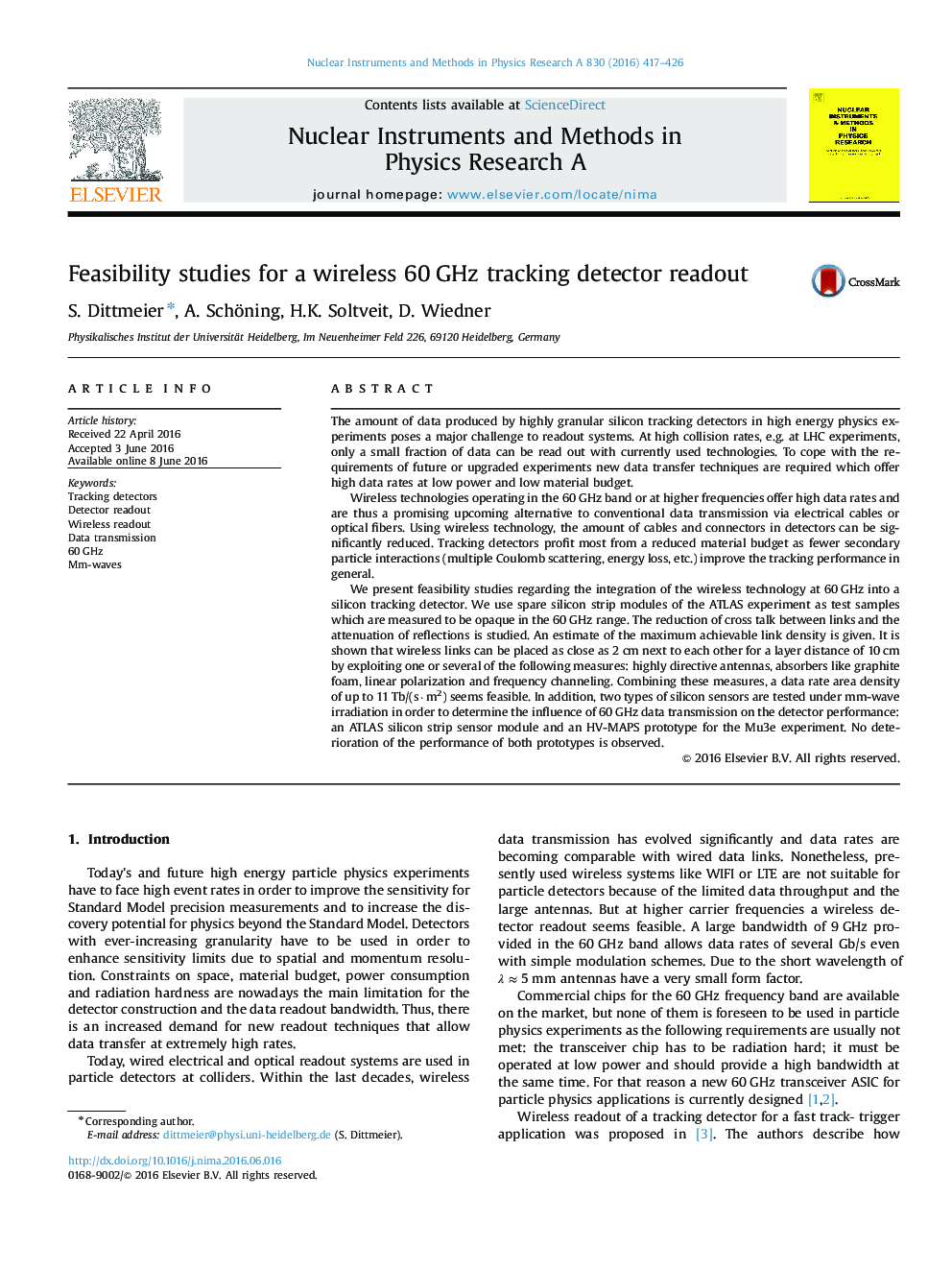| Article ID | Journal | Published Year | Pages | File Type |
|---|---|---|---|---|
| 8168903 | Nuclear Instruments and Methods in Physics Research Section A: Accelerators, Spectrometers, Detectors and Associated Equipment | 2016 | 10 Pages |
Abstract
We present feasibility studies regarding the integration of the wireless technology at 60 GHz into a silicon tracking detector. We use spare silicon strip modules of the ATLAS experiment as test samples which are measured to be opaque in the 60 GHz range. The reduction of cross talk between links and the attenuation of reflections is studied. An estimate of the maximum achievable link density is given. It is shown that wireless links can be placed as close as 2 cm next to each other for a layer distance of 10 cm by exploiting one or several of the following measures: highly directive antennas, absorbers like graphite foam, linear polarization and frequency channeling. Combining these measures, a data rate area density of up to 11 Tb/(s·m2) seems feasible. In addition, two types of silicon sensors are tested under mm-wave irradiation in order to determine the influence of 60 GHz data transmission on the detector performance: an ATLAS silicon strip sensor module and an HV-MAPS prototype for the Mu3e experiment. No deterioration of the performance of both prototypes is observed.
Related Topics
Physical Sciences and Engineering
Physics and Astronomy
Instrumentation
Authors
S. Dittmeier, A. Schöning, H.K. Soltveit, D. Wiedner,
